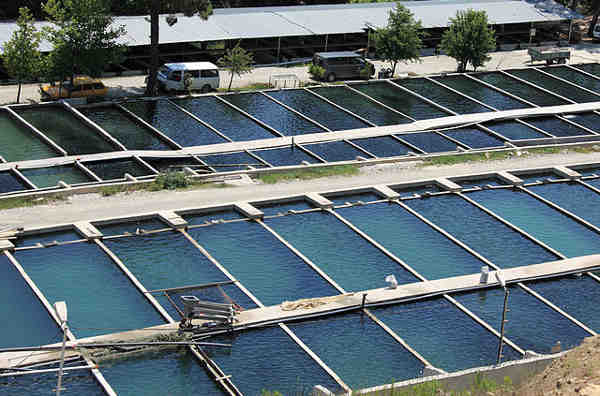With worldwide consumption of fish at an all-time high in the last few years, scientists and fish farmers are working to develop methods to farm fish more sustainability and affordability. According to scientists at the American Association for the Advancement of Science 2013 annual meeting, one method is a new kind of high quality fish feed. The feed is comprised of raw ingredients that humans cannot consume, including microbial organisms, such as yeast. Using yeast is an improvement over using fish-based or plant-based fish feed: the fish-based feed is less efficient, requiring several pounds of smaller fish to produce one pound of farmed fish, while the plant-based feed produces fish that are less nutritious and oily.
Another aquaculture method that scientists at the United States Department of Agriculture Agricultural Research Service are exploring is land-based containment systems. Currently some industrial fish farms operate by pumping extra fertilizer, antibiotics, and growth hormones into existing bodies of water, or by keeping fish in pens in oceans or lakes, where the waste products can cause devastating outcomes such as disease outbreaks or algal blooms. The Christian Science Monitor published an article on land-based containment systems a few years ago, when commercial aquaculture companies were first considering it. Scientists have since made the technology more scalable and commercially viable: there are five land-based closed-containment systems around the world, and twelve more are planned. Thus far, the five existing systems show a great deal of promise. Increasing the amount of sustainably farmed fish is a large part of the solution to the food needs of the growing global population.













